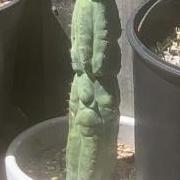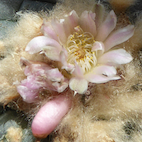Leaderboard
Popular Content
Showing content with the highest reputation since 27/03/24 in all areas
-
3 pointsIf you cover my cost for postage - I can send you cutting of Sceletium tortuosum Sceletium emarcidum Delosperma bosseranum Delosperma echinatum Trichodiadema stellatum Lampranthus spectabilis (red) Mesembryanthemum (Aptenia) cordifolium (purple) Message me if you are interested.
-
1 pointI have several khat plants in 40L planter bags for sale. I propagated more of these than I need I have red and narrow-leaf varieties please PM if interested. I am potentially open to trades, but there isn't much I'm looking for
-
1 point
-
1 pointHey, Large red khat, tricho's in 30 to 50 mml pot, kolanut tree in 40mm plus extras that are beautiful. Northern river, north NSW.
-
1 pointDoing lots of cuttings of this at the moment, if someone wants to grow it get in touch here. No WA/TAS. Tea has been prepared from the leaves, rich in antioxidants. Iresine herbstii (Amaranthaceae), traditionally called “cimora se˜ norita”, is used in black magic (De Feo, 2003) and in association with San Pedro for magic rituals (Friedberg, 1959; Dobkin De Rios, 1977; De Feo, 2003), to diagnose illness, and to take possession of another identity (Cruz-Sanchez, 1948). Its leaves are claimed, for external use, a skin depurative, whereas the aerial part decoction is known to be an antipyretic (De Feo, 2003). - anti-inflammatory, cytotoxic and apoptotic activities and antioxidant activity - affinity for the 5-HT1AR - affinity for 5-HT2C receptor and for D1 receptor (MeOH extract) - lower affinity for D1 and higher affinity for D2 receptors (Aq. extract) - presumable antagonist action on D1 and D2 receptors by Iresine (both extracts) Leaves: 2,5-Dimethoxy-6,7-(methylenedioxy)-isoflavone; acylated betacyanins Roots: oleanolic acid and its saponins. An alcoholic extract of the root showed the presence of amino acids, steroids, triterpenoids, alkaloids and coumarins. https://doi.org/10.1016/j.jep.2005.11.022 https://doi.org/10.1076/phbi.34.3.184.13212
-
1 pointDoes erowid still add things to their experience vaults? Might be good to document given it's traditional use, even if the experience is "no effect"
-
1 pointI tend to water and feed my Trichocereus heavily, however my soil is mostly inorganic and drains quickly. The cuttings had no roots until recently and what it now has now is the bare minimum, so I do not think that it could suck up enough water to split. Therefor I suspect that the cutting had the split in it before I got it - I just never noticed before.
-
1 pointSometimes I have had a cactus split by receiving to much water, creating a cavity. It has callused over and had no bearing on the health of the plant.
-
1 pointNo experience with consumption myself either but maybe I need to expel some bad spirits....
-
1 pointI've been propagating this for a while now, but have no experience with consumption. How does it taste? Grows well from cutting, but not from seed, in my (limited) experience.
-
1 point
-
1 pointNow that spring is almost upon us I thought I’d share the method I use to germinate Acacia Phlebophylla seeds. It has taken a few years of trial and error but now I have it down pat. I’ve got it to 90%+ germination rate all in the first month of spring. It certainly isn’t the only method but it works for me and I thought sharing might encourage others to give it a try. I like to start the process early August (as it takes about 4 weeks for them to start germinating) to take full advantage of the spring/summer growing season. I use a razor blade and take a tiny nick off the hilum end of the seed, this is where the root will come through. Be careful not to take too much off you only need to get through outer coat. Once they are all scarified I then soak them for 24hrs in previously boiled but COLD water. Boiling water at this point will kill your seeds if using this method. After 24hrs and seeds have swelled up, I now put them in a plastic Chinese container between two sheets of damp paper towel (I like viva brand as it holds a lot more moisture than cheaper towel), all spaced out so they aren’t touching. I put the lid on and place them in the fridge. They will germinate in the fridge and throw out a tap root but it normally takes about four to six weeks for the first ones to start. Once they grow their little root (2 or 3mm, don’t let it get too long) I pick them out of the container and put the rest back in the fridge, checking them every few days. It normally takes a few weeks for them all to germinate once they’ve started. I then very carefully with a pair of tweezers peel off the outer coating of the seed and plant them in a seedling tray just under the soil with the root facing down. I put the seedling tray in the hothouse watering daily as seedling trays dry out quickly. Your little seedlings will be up in a few days. soil mix used is pretty simple, 3 parts Bunnings native potting mix to 1 part river sand, with a handful of soil from the base of one of your local acacias as a rhizobia inoculant mixed in to every seedling tray. They take a couple of months to get their first adult leaves but once they do they grow fairly quickly. I also then start fertilising them with swift grow (swiftgrow.com.au) every couple of weeks. Happy gardening
-
1 pointThe nutrients in that mix might be counter-productive for the purposes of germination. I had a batch of A. phlebophylla seedlings that I killed (wilting, shrivelling, and dying pretty much as you describe) because I accidentally fertilised them. Seeds in general, I reckon, are self-sufficient and have no need of additional nutrients. So I tend to avoid fertiliser at this stage, as a rule of thumb. For potting on, once established, native potting mix from Bunnings gives good results. Bunnings also sells coarse river sand for propagation, your best friend. Here's what Simmons recommends (scanned pages with info here) Seed growing mix: 3 parts washed or sterilised coarse river sand 1 part peat moss or aged crushed pine bark or 3 parts perlite 1 part peat moss Potting on mix: 3 parts coarse river sand 1 part peat moss or old milled bark 1 part loam or perlite or 2 parts sand 1 part peat 1 part gravel with old manure or compost added Cutting mixture: 3 parts coarse river sand 1 part peat moss or old crushed bark 1 part perlite or a soil-less mix 3 parts perlite 1 part peat moss
-
1 pointNeuroscience is not my strength, would you say that this difference is a possible reason for galantamine being effective and the other not, although both increase the ACh in the brain? I took 300ug of Huperizine A last night, this time before bed time, rather that after 4 hours of sleep, and all it did was to prevent me from sleeping. I though that perhaps it began to work at a slower pace than galantamine. I'm a bit disappointed as it is easily available and cheaper. I have suspended its use for now as I want to focus on one supplement at a time. The 50mg freebase was based on the journal article "Use of DMAE (2-dimethylaminoethanol) in the induction of lucid dreams" by W. Sergio. He claimed that after 2 weeks, the level built up and he was able to have lucid dreams of the WILD type in the mornings. I will most definitely focus on this substance again in due course as it may have helped with my everyday memory. I haven't as yet, but I soon will receive alpha GPC, 600mg. Apparently, it can also trigger lucidity by itself, according to the book "Advanced Lucid Dreaming - The Power of Supplements" and as you mention works very well with galantamine, I will will see if Huperizine can be made to work with it too. Some other things the book mentions include tiny doses of yohimbine and nicotine, although the latter is said to damage some receptors crucial for lucid dreaming. L-Dopa from mucuna pruriens is also recommended to better quality dreams. The book is rather old , so there is no mention of using huperizine or salvinorin A. Next plan of action is the alpha GPC, by itself, with galantamine and finally with huperizine, all after 4-5 hours of sleep. But first I will take P5P for a week to investigate if this form of vitamin B6 truly helps with dream recall. I'm interested in lucid dreams and etheric projection (astral projection on this plane). I've never had the latter, not even sure if it is a real thing or a type if lucid dream. Author links open overlay panel
-
1 pointGalantamine is interesting as it functions as both an AChE inhibitor and positive allosteric modulator of a7-nAChRs, I found it quite cognitively interesting but wasn't looking for lucid dreams. On the contrary, huperzine A seems more to be AChE/NMDARs. Your DMAE dose seems personally quite low but I can see there being challenges using it with sleep as some people find it activating. As the bitartrate 250mg-500mg may be more typical, eq, dimethylaminoethanol freebase ~186mg at the upper dose. Out of interest, have you explored something like CDP-choline as a cholinergic? It seems to have procognitive effects mediated by predominately a7-nAChR activation. More recently there's been interest in coupling AChE inhibition with CDP-choline or alpha-GPC for dementias and that seems to be an effective augmentation, so perhaps that could be possible to cautiously augment huperzine A with such, in theory. I have some Silene undulata 98% triterpenoid saponins extract from the SAB store, if you want a bit in an envelope no cost send me a PM. It didn't get as frothy as expected (presumptive test for saponins) but did form a lasting sort of foam to some extent.
-
1 point
-
1 pointkratom use will certainly not ruin your life, there is a saying in malaysa, saying woman, marry a kratom chewer and not a pot smoker, the chewers are working, the pot smokers are lazy. i predict a future when most psychotropic plants, will be legal again, because the sience will proof us sab'ers right. people like john howard and his advisors, are uneducated, and made there decisions, not understanding the ethno community's knowledge. a lot of doctors and psychiatrist are already on our side!
-
1 pointIn recent years the WHO and FDA both determined that Kratom was not a drug of concern. So that's encouraging. There have been copious studies on Kratom's (relative) safety since the TGA scheduled it as a poison in 2003. Not to mention, a synthetic opioid epidemic. I think it's only one of two active alkaloids, mitragynine, that's included in the poisons schedule.
-
1 pointI would assume the consequences are 1. They lose their vote on the next issue. So that leaves the party less likely to be able to pass legislation. 2. They are penalised financially, either a fine or that week/month salary 3. They go on a public register. This could then be used to assess their character by the electorate come next election cycle. Failing that you could simply criminalise drinking or drug decision making in the same way it is for driving.
-
1 point
-
1 point
-
1 pointi love you alchemica ^ is what i'd probably say if you sent me some nasal geario and then PM'd me right as i opened it






.thumb.jpg.e9d51d58690f106896c7c46ee7449d59.jpg)






